Dem-NPL statement on FY2018 budget
(BISMARCK, ND) – In response to the release of President Trump’s 2018 budget, Democratic-NPL Executive Director Robert Haider issued the following statement:
“Unsurprisingly, this proposal is bad news for North Dakota. It includes windfall benefits for the wealthy and steep cuts to services for seniors, children, working families and rural communities, all while failing to balance our national budget or promote responsible spending policies.
“Under this budget, hundreds of billions of dollars would be cut from Medicaid in the next 10 years. This would be especially harmful in North Dakota where tens of thousands of individuals rely on Medicaid for access to affordable health care. It slashes farm safety net programs, which are vital to North Dakota’s economy and protect hardworking farmers throughout our state. It further cuts funding for children’s health insurance and medical research, public schools and affordable student loan programs, and programs that support our most vulnerable populations, including children and the elderly.
“Simply put, this proposal benefits the wealthy while leaving the working class and rural North Dakotans out to dry. It cuts the vital programs that keep our communities safe and strong and our citizens healthy. And it is not an honest attempt at balancing our budget.”
# # #
Background:
NYT: Trump’s budget sets out an austere vision for reordering the nation’s priorities: President Trump plans to unveil on Tuesday a $4.1 trillion budget for 2018 that would cut deeply into programs for the poor, from health care and food stamps to student loans and disability payments, laying out an austere vision for reordering the nation’s priorities. The document [includes] an improbable promise of 3 percent economic growth. The wildly optimistic projections balance Mr. Trump’s budget, at least on paper, even though the proposal makes no changes to Social Security’s retirement program or Medicare, the two largest drivers of the nation’s debt. To compensate, the package contains deep cuts in entitlement programs that would hit hardest many of the economically strained voters who propelled the president into office. Over the next decade, it calls for slashing more than $800 billion from Medicaid, the federal health program for the poor, while slicing $192 billion from nutritional assistance and $272 billion over all from welfare programs. […] The plan would cut by more than $72 billion the disability benefits upon which millions of Americans rely. It would eliminate loan programs that subsidize college education for the poor and those who take jobs in government or nonprofit organizations.
Vox: The trillions in shocking cuts in Donald Trump’s budget, explained: What’s more, his budget assumes an extremely unrealistic economic growth rate — 3 percent, above the currently projected 1.9 percent — due to the administration’s tax plan. It appears the administration is counting on that growth both to pay for its spending in this budget and to pay for its tax cuts, meaning the budget doesn’t really add up at all. […] Cuts include:
All $880 billion in Medicaid cuts included in the Republican health plan that has passed the House, plus $610 billion in additional cuts due to adopting an even stingier formula for increasing Medicaid funding year over year. This amounts to a total cut to Medicaid of over 47 percent.
$191 billion in cuts from Supplemental Nutrition Assistance Program. That’s about a 25 percent cut. This will effectively kick many people off the program or dramatically cutting benefit amounts.
$40.4 billion in cuts to the earned income tax credit and child tax credit over 10 years, programs that, along with SNAP, make up much of the US’s safety net for poor people.
Trump’s budget take aim at crop insurance: Trump’s first budget proposal, set to be released Tuesday, asks Congress to slash food stamp spending in fiscal year 2018 by more than a quarter and severely restrict how much the federal government subsidizes crop insurance premiums for large farms — painful propositions as tens of millions of Americans struggle to make ends meet and the farm economy tanks under the weight of low commodity prices. The president’s plan, previewed by his budget chief on Monday, would deliver hits to mandatory spending on both sides of the farm bill, which lawmakers are scheduled to reauthorize in 2018, en route to delivering $228 billion in savings from farm bill programs over 10 years. And that’s on top of a reduction in USDA discretionary spending that is expected to be in the neighborhood of 20 percent, per the “skinny” budget the White House put out in March.

